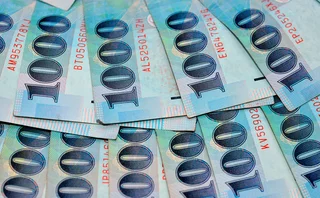
UBS admits Sfr20.9 billion loss for 2008
Swiss bank UBS recorded a bigger-than-expected net loss of Sfr20.9 billion ($18.03 billion) for 2008, driven by losses and writedowns on exposures to US real estate assets.
"Our balance sheet was too large and the systems of risk control and risk management that should have limited our exposure failed. We placed too much emphasis on growth and not enough on controlling risks and costs, particularly in regards to our compensation systems, performance targets and indicators and executive governance structures," the bank said today.
UBS has benefited from a special purpose vehicle, known as the Stabfund, which was created last October by the Swiss National Bank to absorb up to $39.1 billion (initially $60 billion) of the firm's toxic US and European residential and commercial-backed securities, as well as other asset-backed securities clogging its balance sheet. On December 16, 2008, UBS transferred $16.4 billion of securities positions to the Stabfund.
In addition to central bank measures, UBS said it took active steps to increase its financial stability in 2008 with the issuance of two mandatory convertible notes and a rights issue, which together raised Sfr34.6 billion of new capital.
However, looking ahead, the firm explained its balance sheet "remains exposed to illiquid and volatile markets and our earnings will therefore remain at risk for some time to come…our near-term outlook remains extremely cautious".
See also: Q4 loss of Sfr8.1 billion for UBS
SNB issues US dollar debt to fund UBS's bad bank
Swiss National Bank to take $60 billion in UBS assets
UBS's chairman to follow CEO out
Only users who have a paid subscription or are part of a corporate subscription are able to print or copy content.
To access these options, along with all other subscription benefits, please contact info@risk.net or view our subscription options here: http://subscriptions.risk.net/subscribe
You are currently unable to print this content. Please contact info@risk.net to find out more.
You are currently unable to copy this content. Please contact info@risk.net to find out more.
Copyright Infopro Digital Limited. All rights reserved.
As outlined in our terms and conditions, https://www.infopro-digital.com/terms-and-conditions/subscriptions/ (point 2.4), printing is limited to a single copy.
If you would like to purchase additional rights please email info@risk.net
Copyright Infopro Digital Limited. All rights reserved.
You may share this content using our article tools. As outlined in our terms and conditions, https://www.infopro-digital.com/terms-and-conditions/subscriptions/ (clause 2.4), an Authorised User may only make one copy of the materials for their own personal use. You must also comply with the restrictions in clause 2.5.
If you would like to purchase additional rights please email info@risk.net
More on Foreign exchange
Will Taiwan lifers ramp up FX hedging amid tariff turmoil?
As TWD remains strong against the US dollar, Taiwanese life insurers are still poised to act
Deutsche Bank takes AutobahnFX on the open road
Proprietary trading platform sets out new workflow-based approach to collaborating with venues
Dealers bullish on Bloomberg chat interface for FX markets
Service expanded its API offering to integrate broker chats into banks’ engines for cash FX pricing late last year
LCH expects to boost deliverable FX clearing with new adds
Onboarding of dealers and link-up with CLS could swell interbank deliverable FX clearing volumes
Does no-hedge strategy stack up for mag seven mavericks?
At Amazon, Meta and Tesla, the lack of FX hedging might raise eyebrows, but isn’t necessarily a losing technique
Amazon, Meta and Tesla reject FX hedging
Risk.net study shows tech giants don’t hedge day-to-day exposures
Intraday FX swaps could signal new dawn for liquidity management
Seedling market could help banks pre-fund payments in near-real time and reduce HQLA requirements
Natixis turns on the taps in flow trading
French bank boosts flow business, balancing structured solutions capabilities







